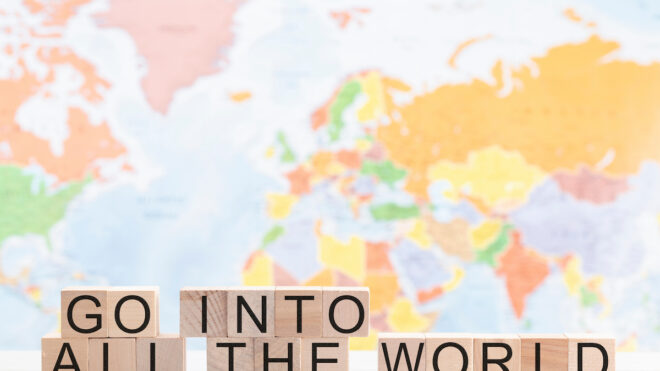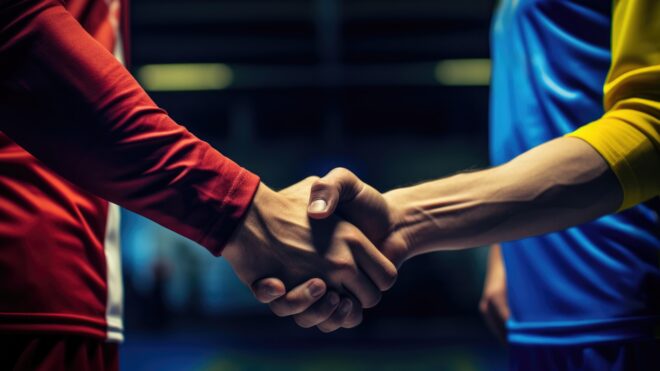This summer, for the first time, my wife and I made a visit to America’s largest state, Alaska. In her case it was especially poignant, because she had passed up a chance to go there with her parents at age 17 and had regretted it ever since. We had been interested in the place, not only for its frontier delights and natural beauty, but because it was the one American state that was established in the Chalcedonian Orthodox tradition, not Protestant or Catholic. The state had also gotten notoriety from Sarah Palin and her family, who seem not to know much about the Orthodox tradition; and also I’d gotten to know a local OC band called Eye Alaska, the founder of which claims that the name came from the Aleut for “that which the sea breaks against.” I confess I forgot to check that out when I was there and had the opportunity. Anyway, none of them have ever been to Alaska. Their closest link to Alaska is that, given the bandleader’s last name, his ancestors in the male line were quite likely under the same government as Alaska during the years 1815-1867.
We did the land exploration the first week, and the cruise the second. We landed, first, at Anchorage. Anchorage is pretty inescapable, being the one large city – comparable in size to Wichita, Kansas – and a crossroads of airlines during the Cold War when Japan Airlines couldn’t fly over Russia. The town is not very New Urbanist exactly, but it does have some decent museums and souvenir shops. The Native open-air museum, a little east of the town on the freeway to Palmer and Wasilla, is excellent. We saw a dance display by Chupiks, who are a sub-variety of Yupiks, who live on the roadless west coast between Nome and the Alaska Peninsula. The art and culture museum is also excellent, but right across the street from the back side of it is a museum of Orthodox and Russian culture that is now closed! I was very disappointed. The art and culture museum, if it has the resources, ought to take the Russian museum over and restore it. Admittedly Anchorage was founded in 1915 and was never really a Russian city, but it’s still the front door of the state to many and if it has a Native museum, it should have a Russian one. There is an Orthodox cathedral in town, but it is fairly new.
I will admit that the first few days in town I had this “Twilight Zone” feeling that I had when I was in Kaliningrad three years ago. Kaliningrad was for a long time (1618-1772 and 1918-1939) a pocket of Prussia or Germany that was cut off from the rest of the country by Poland; and since 1991 it has been a pocket of Russia that is cut off from Russia by Lithuania and Belarus! I got over it in a few days, however.
Anchorage is built on a platform between high mountain walls and the sea. Low density, it has reached its limits, occupying the whole platform. So we got on this freeway that ran eastward on a narrow corridor between the mountains and the sea, which ended at Wasilla. I had been led to think of Wasilla as a city of trailer parks and generally trashy. Well, no. At the first cross street at the end of the freeway was a Chili’s, and from there on the place kind of looked like a middle-level American suburb. Because there’s not a lot of buildable land between Anchorage proper and the Matanuska-Susitna area (usually called Mat-Su by Alaskans) where Wasilla is, suburbia got squeezed up the 40 mile freeway like toothpaste to reemerge at the other end.
A little bit further down the road, we passed Willow, where the Alaskans voted to move their state capital in 1976, then changed their mind in 1982 when they realized it might cost money to do so. And this in a state where every Alaskan gets a dividend check every year from the government share of the pipeline. There is almost nothing there now. We went on to Talkeetna, a colorful, touristy little town that is supposedly the launching place of scenic flights to Denali (Mount McKinley), and it is a fun town, but it was so drizzling and cloudy that there weren’t any mountains to be seen, much less McKinley! We found out that Anchorage had not had a clear day since April. This is all due to the same pressure belt that gave the So Cal coast its coldest summer in a generation and made some usually green parts of Hawaii browner than I have ever seen them.
We went uphill and over the divide and it began to get clearer with even some sunshine. We stayed overnight at an exotic B&B not far from where the main cluster of hotels and restaurants for the Denali park is. The next day we drove into the park and saw scenery and animals and mountains – but the mountain remained invisible.
That afternoon we headed down toward Fairbanks. The road crossed the Nenana River at the small town of that name (which looms big on the map, this being Alaska). Then the road climbed away from the river and wound along a forested ridge all the way to Fairbanks. I can only assume that the ridge is a better place to put it because rivers flood. The town of Fairbanks itself is about the size of Redding, California (and this is Alaska’s second city) and feels like it, except for the University on the northwest side of town, which has another museum even more wonderful than the one in Anchorage. It is not on the Nenana river but on a much smaller one called the Chena, probably, again, because the Nenana is so prone to flooding. The town has tried to fix up its riverfront, but it does not feel like a particularly prosperous place, especially downtown. There is a quite good restaurant called Lavelle’s, the best in town, but it’s only open for dinner, not lunch. One wonders what the business people do for lunch. It’s also remote from any Orthodox or Russian influence – here, you leave “Byzantium on the Pacific” behind. The weather, many days in summer, soars into the 70s. Winter, we were assured, is quite another matter, with minus 40 (which is the same in Celsius and Fahrenheit) not uncommon. Rainfall is no greater than in Los Angeles, but at that latitude that is no bar to forests of spruce and aspen. (The North Slope, on the Arctic coast, supposedly has less precipitation than the Arizona “desert,” but even there it is not that but the cold that puts a halt to the growth of trees. The lack of summer warmth, that is. I don’t think winter temperatures on the North Slope are any lower than those of Fairbanks.)
We had driven up by the “new” road, the George Parks Highway, which was finished in 1973 to parallel the Alaska Railroad line. We headed back to Anchorage by the older road, which parallels the Pipeline for much of its length and is longer – some 450 miles. The spaciousness and the scenery are beautiful on that road, but for some 300 miles there are no decent tourist accommodations or places to eat. We stopped at one place in the middle of nowhere that was supposed to be an inn but there was no one parked there. I went in and some bearded gentleman growled at me, “What do you want?” We felt less like tourists and more like characters in some Grimm’s Fairy Tale, so we drove on two more hours to Glennallen, where the Fairbanks to Valdez road crosses the road from Anchorage to Yukon Territory. But by that time we just bought something in the gas station store and didn’t stop at the decent place to eat. The road continued to be spectacular as we dropped down to Palmer, site of a government-sponsored colonization during the Depression, now being suburbanized despite its famous bipolar huge cabbages and other vegetables, because of the long days despite the short growing season; and then back on the freeway to Anchorage.
We had to drive some three hours, the next day, to catch the cruise ship in Seward. Anchorage is on a long fjord called Cook Inlet (Captain Cook really got around before the Hawaiians did him in) and it is a long way around the Kenai Peninsula, which looks like a small thing on the map but is almost the size of New England. Anchorage is actually at the northwest end of a series of valleys and fjords that runs through the Inside Passage and Puget Sound and the Willamette all the way to Bakersfield, California. So we had to drive to Seward to catch the cruise ship. And of course it was raining.
The next day, however, the rain and fog cleared off enough for the cruise ship to be able to look at a quite large glacier which still reaches the ocean. We oohed and ahhed. The next day we stopped at Skagway, which was pretty wild when it was the main port of entry for the Yukon gold fields at the turn of the last century. When the would-be-miners set out across the pass, however, they encountered the Canadian border and the Royal Canadian Mounted Police, who insisted that they should have 2000 pounds of supplies – a year’s worth of sustenance – before they could proceed on to the gold fields. So they often had to winter in place at the border while they went back and forth to Skagway to accumulate enough supplies. And then, much to their disgust, they had to pay duty on the supplies! Then they could head on. `Tis said that the main gold town in the Canadian Klondike, Dawson City, thanks to the RCMP, was a place where a man could leave his gold out on the street and come back to it later. The RCMP was apparently a little more open to gambling halls and houses of ill repute, helping reinforce Canadians in their commitment to “peace, order, and good government” while being tolerant of sins that did not involve violence or theft.
Juneau is the third largest city and state capital, but it seemed to me to be an overgrown Avalon, Catalina, with trees and politicians. That, I think, was the effect of all the cruise ships. Ours didn’t get to dock, because larger ones had taken all the dock spaces.
It had actually turned hot in Skagway and Juneau, but as we approached Sitka the next morning it turned cool and rainy again. The water approach to Sitka goes past a number of small islands that look like the “skerries” off the Scandinavian coast. I thought it beautiful. Sitka itself was the one place in Southeastern Alaska that I would have made sure we were to go if we were not on a cruise; and I was right. It was the capital during most of the Russian century, 1767-1867. There is the Russian commandant’s house; and there is the cathedral, which burned down in 1969 and was rebuilt from scratch.
It should be noted here that the Russians, when they arrived, enslaved the Aleuts and others and forced them to gather furs and hunt sea otter. The sea otter was nearly wiped out all the way to Baja California. The Orthodox Church stood up for the Native Alaskans and translated Biblical literature into such languages as Yupik, Aleut, and Tlingit, with the result that large numbers of these Native peoples are now Orthodox. Every Orthodox American, I think, should go to Sitka once in their lifetime.
Sitka is also the site of the first Protestant Church on the west coast of North America, (i.e., not including Hawaii) and the first pipe organ. How this came about was that from 1809 to 1918, Finland was a grand duchy under the Russian czar. And in 1840, Finnish craftsmen were brought over to Sitka, and allowed to build a Lutheran church there. And a pipe organ was brought in. The first Anglo settlements west of Texas were in the Willamette Valley, and I guess they didn’t get to the point of having real churches till about 1843; and in California there could be none until the Mexican authorities surrendered for the final time in 1847.
Ketchikan calls itself the “first city,” not because it is at the top of any lists, but because it is the first significant town one comes to as one approaches Alaska from the south. In our case it was the “last city.” We walked around, saw where the old red light district was, and bought outrageous T-shirts. The harbor itself had a lot of landings of “float-planes,” which is Alaskan English for seaplanes. They landed on waters our ship had had to traverse. I can’t help wondering if they have an Air and Sea Traffic Control that monitors both the landing and taking off of float planes and the passage of ships. (Surely, if it were in Canada, there would be such a thing!)
Since we were not stopping in Prince Rupert, but going direct to Vancouver (some cruises do stop in Prince Rupert), the next day had no stops as we hugged the coast and eventually went into the lee of Vancouver Island. It was as beautiful as they say. At one point the channel got quite narrow. I had always tended to think of Vancouver Island as fairly flat, but it is not; mountains lower than on the mainland side, but mountains nonetheless. And, on the island side, real roads began to appear. The next morning we woke to find ourselves landing at Vancouver. We couldn’t spend any time there, as we had to dash to the airport to fly to Toronto for a rather interesting wedding (yes it was a boy and a girl, but it was still very interesting). But that is another story altogether.



